Heritage and Homecoming at the Bell Works Adaptive Reuse Project
Steven Schrenk
Polycor
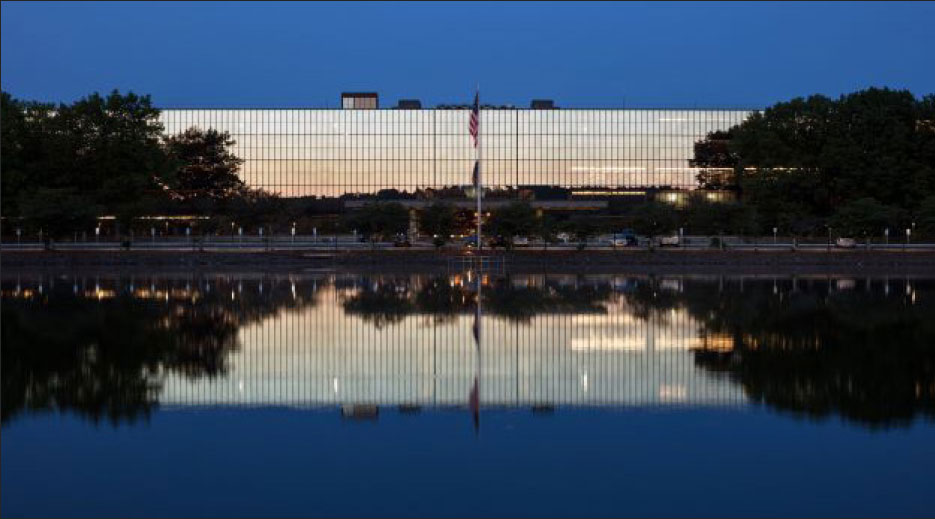 |
| Above: Bell Works Exterior. Photo courtesy Bell Works |
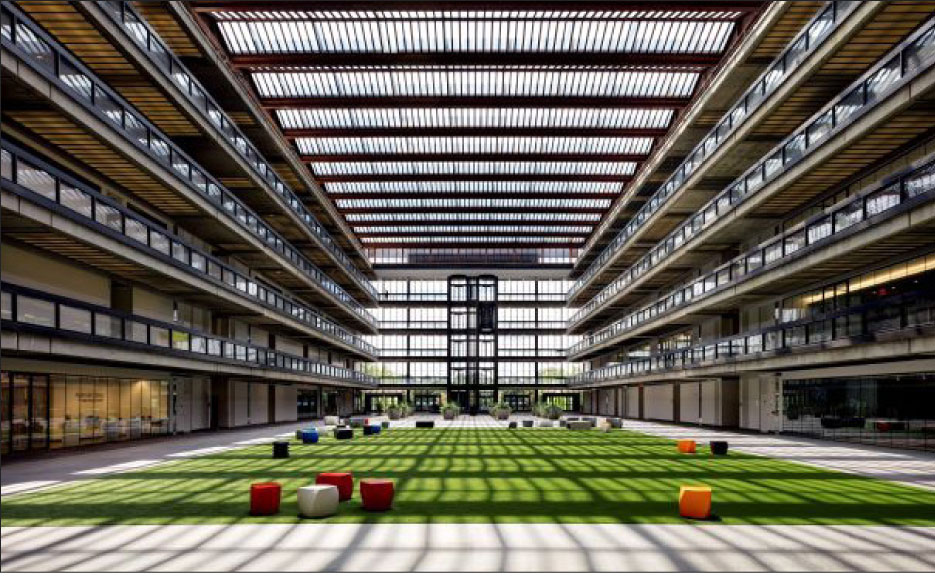 |
|
Bell Works Atrium. Photo courtesy Bell Works |
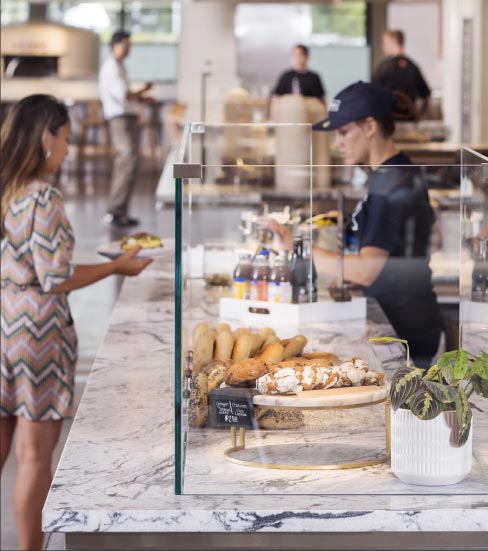 |
|
Bubz Deli. image courtesy of Lapeg Photo |
What does home feel like? Roads you know by heart. A familiar landscape, the way the air smells at the beach. A personal connection to a building, where you went to visit your dad at work. A literal piece of the earth from where you were born.
Those sensations and connections all fed the design of a new business for the chefs and partners of RBC Hospitality Group, who this year opened a new collective restaurant concept in the unlikely spot of the New Jersey suburbs.
When they signed their lease at Bell Works, the adaptive reuse of a building that once housed Bell Labs, there was no customer data to project from. There wasn’t even any foot traffic. Just a few tenant companies and many more promised to the under-construction live–work–play space. Part office building, part retail center, part pedestrian gathering place, Bell Works is the brainchild of developer Ralph Zucker who wanted to create a little city in suburbia, now called the metroburb.
Located an hour south of New York City, the building is the design of famed architect Eero Saarinen, perhaps more well known for the St. Louis arch and the TWA terminal in New York. The massive two million square foot structure - equal to the Empire State Building laying on its side - became a part of the National Register of Historic Places in 2017 and was this year named New Jersey’s most iconic building by Architectural Digest.
Once off limits to the public, the wide open spaces of the glass enclosed atrium are now a quarter mile stretch of retail spaces called The Street. Visitors can explore the first floor of the modernist gem and take time to relax on the artificial turf lawns, visit the public library, shop in boutiques, and grab coffee at the family owned coffee shop. At lunchtime the first level of the building swells with the workers from more than 70 tenant companies that occupy the building, many of them dining at RBC Hospitality Group’s new venture, Bell Market.
 |
|
The chefs of RBC Hospitality Group. Jeff Systma, Richard Corbo, Chantelle Corbo and Chad Spencer. Image courtesy of Bell Works. |
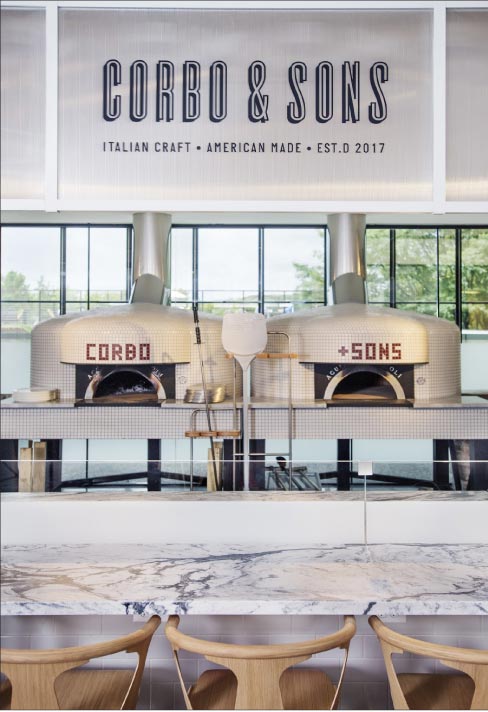 |
|
Pizza ovens at Corbo and Sons. Photo: Lapeg Photo |
With the opening of Bell Market, husband and wife team Richard and Chantelle Corbo, along with their partners Chad Spencer and Jeff Systma launched a restaurant group founded on an ethos to deliver the best local ingredients, within an uplifting work culture not found in the traditional restaurant world. High quality food, with a high quality of life.
The chefs (and Chantelle, who is the group’s beverage director) take great pains to source top shelf ingredients from local mills, farms and fisheries to deliver an elevated food experience to the now more than 2,000 workers at Bell Works and the growing number of the public that visits everyday. Out the four partners, Richard is the only one with a tie to the area, as a kid visiting his dad at work where he was as a signmaker and engraver for Bell Labs.
When it came to sourcing the ingredients for the design of the space, they reached out the best of the global market. Artisan tiles from Spain, wood burning pizza ovens from Italy, furniture from Denmark. And with the best comes a hefty price tag.
“I gave our designer a tremendous amount of freedom and he came back with something that was going to cost $5 million, and then I asked him to come back with something for $2 million,” said Richard Corbo.
The team at nemaworkshop designed the layout of the 6,000 square-foot space that includes five distinct food stations - pizza, sushi, deli, salad, deli and bakery, plus a bar.
The team originally specified overseas marble for the six countertops which would require 12 slabs in total. The Corbos helped save the budget when they serendipitously discovered American marble.
When a friend passed on a sample of Polycor’s Solar Grey marble from Georgia, Richard knew he had found his countertops.
“To see a sample of something beautiful that was a fraction of the cost, plus that was local and abundant, it was an easy choice,” he said.
Richard was so determined to see the stone installed in the space he took delivery of them himself, ordering two extra slabs for his home kitchen.
The Marble Factory in Elizabeth, NJ fabricated the countertops from 2 cm slabs with a thick build up on the mitered edge. “They did a fantastic job,” Richard said. “The build up, it looks amazing.”
For Chantelle Corbo, who grew up in Georgia and played near the Tate, Georgia quarry as a kid, it was a little piece of home in New Jersey.
“It’s one of my favorite elements of the design of the space. Because the countertops are lower you can see their surfaces better. It ties the whole space together,” Chantelle said. “And the fact that it’s from Georgia, that it’s from the U.S., it just made sense. See how the wood chairs look against it? I love it.”
For more information on Cherokee White, visit www.polycor.com.
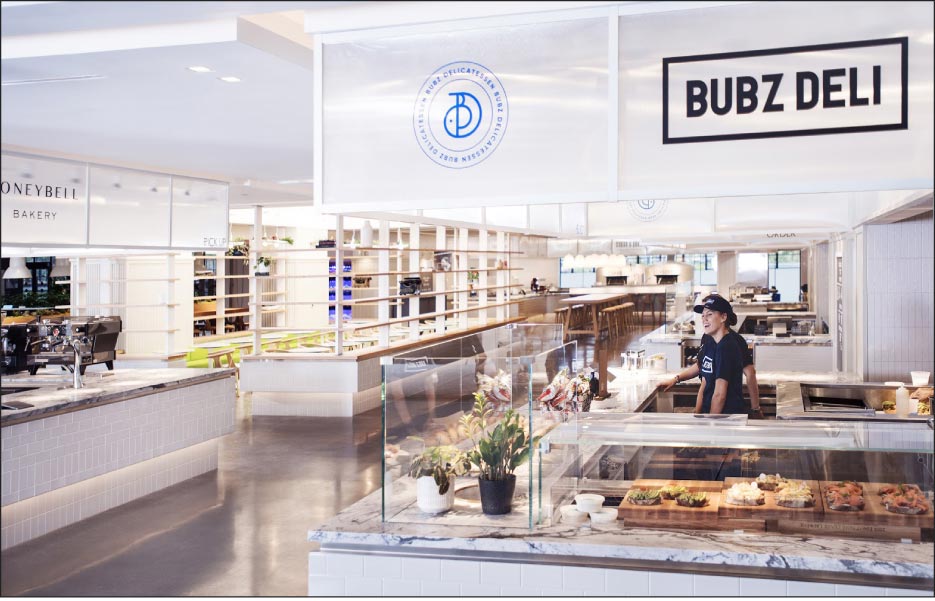 |
|
Photo by Lapeg Photo |